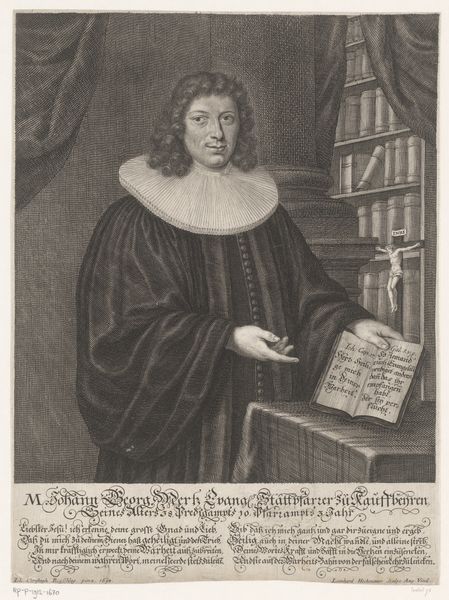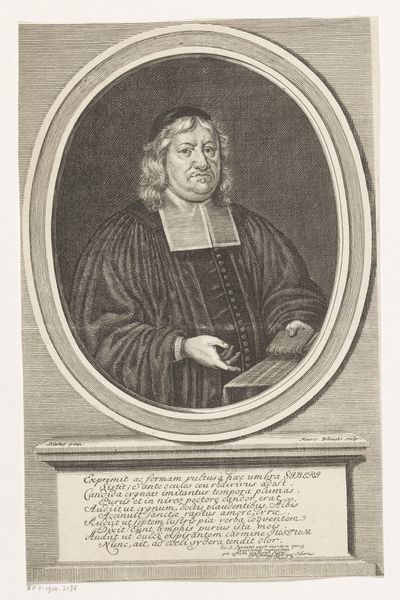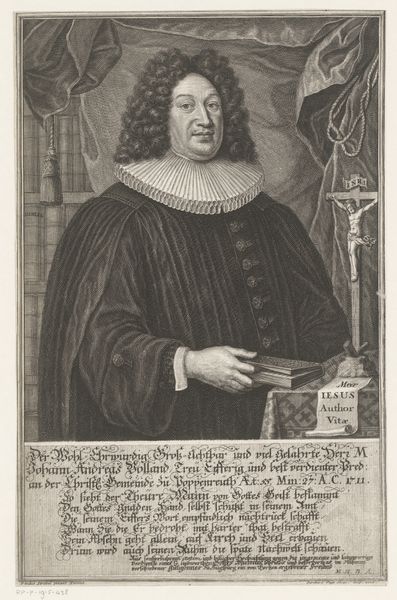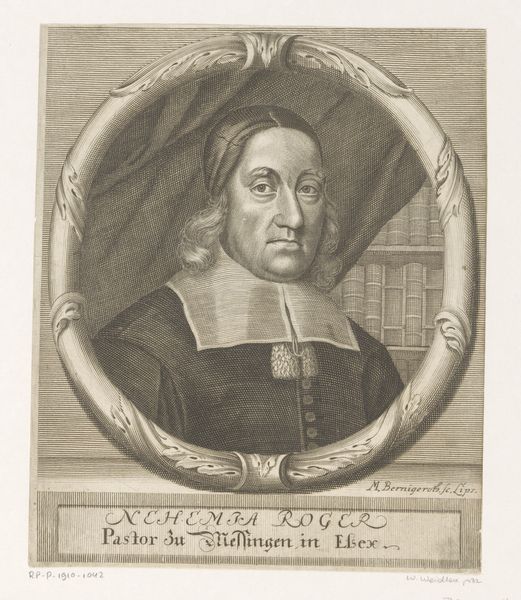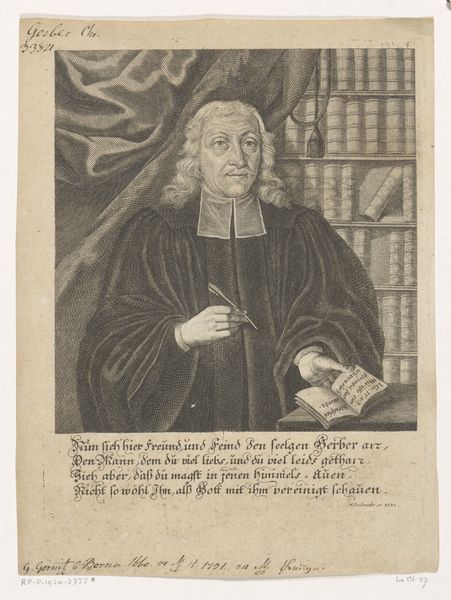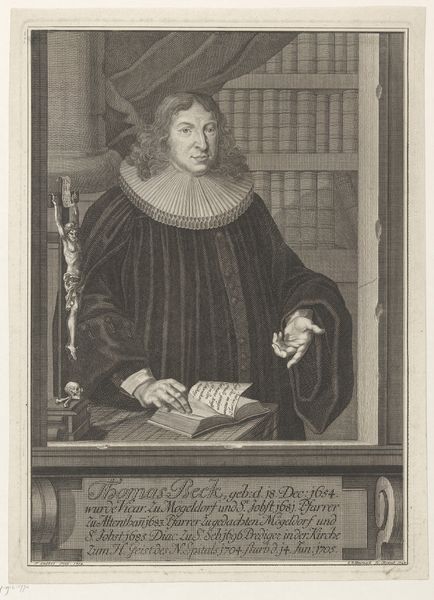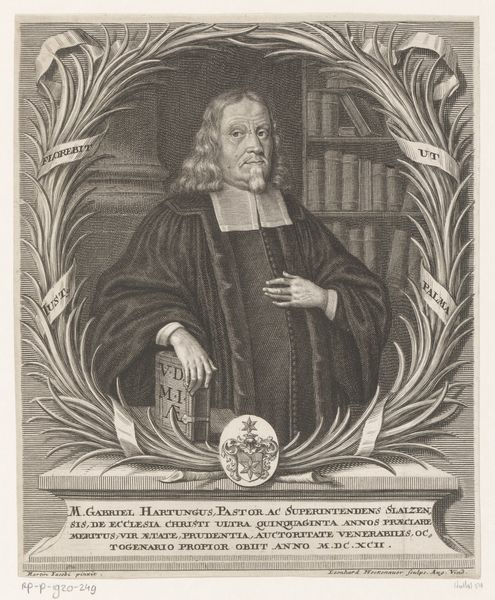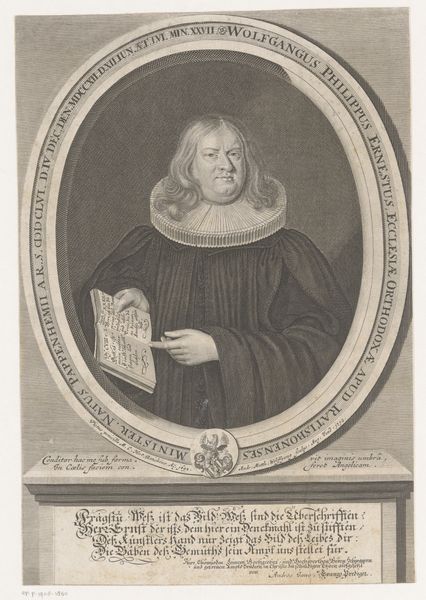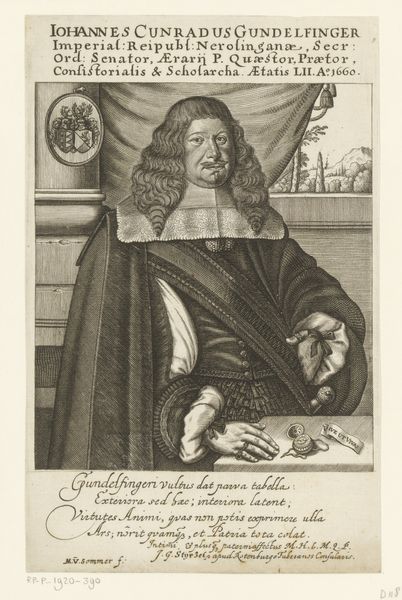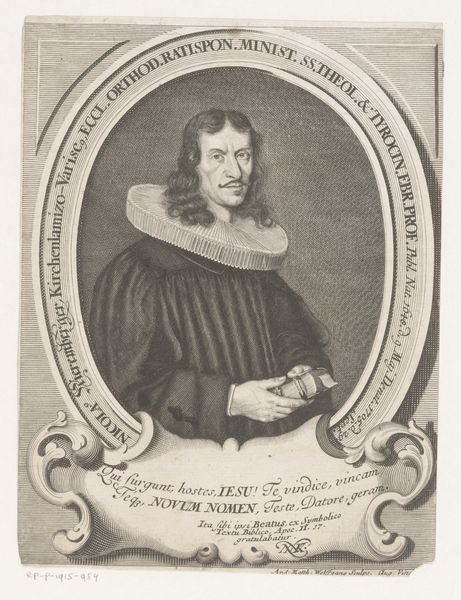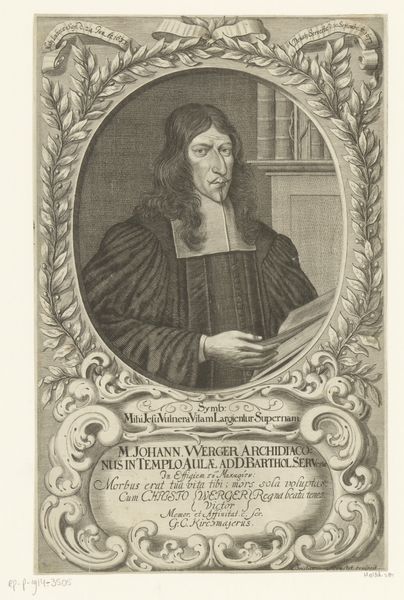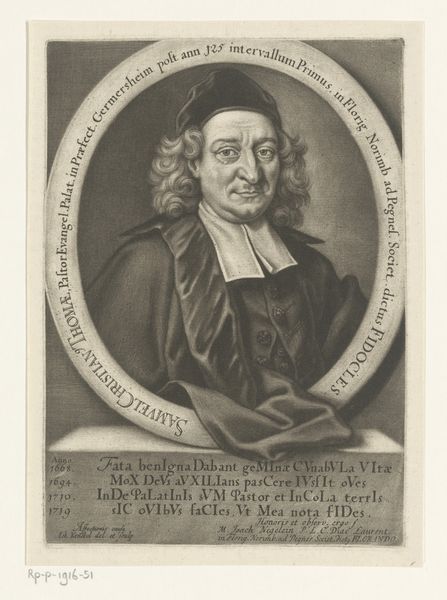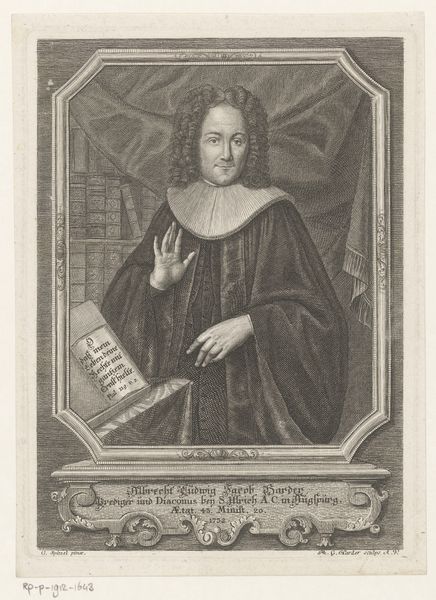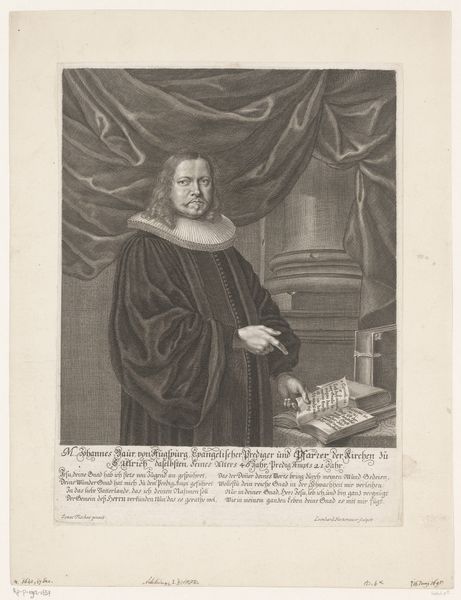
engraving
#
baroque
#
old engraving style
#
historical photography
#
portrait reference
#
history-painting
#
engraving
Dimensions: height 312 mm, width 240 mm
Copyright: Rijks Museum: Open Domain
Curator: Today we’re looking at an engraving titled "Portret van Jeremias Beer op 39-jarige leeftijd" dating back to 1696, currently residing in the Rijksmuseum. The artist is Leonhard Heckenauer. Editor: My first impression is one of starkness and intensity. The lines are so precise, creating a very detailed image despite the limited tonal range. It feels very austere. Curator: The baroque style is certainly evident in the ornamentation—the crest, the detailed fabric. Yet, you’re right, the rigid lines, characteristic of engraving, contribute to a formal severity. What do you make of the materiality here? Engraving is hardly a spontaneous medium. Editor: Absolutely. Each line is deliberate, a testament to skilled labor and meticulous crafting. Consider the cultural implications: an engraving like this makes the subject accessible beyond a painted portrait offered only to a patron class. Here, Jeremias Beer's image could be disseminated widely. This connects with his role. Curator: Indeed. Beer was a preacher, as indicated by the text below the image. He is even posed as if teaching with the Bible open, a stark contrast between spiritual knowledge and public image, or perhaps one reinforcing the other. Notice how his gaze locks onto the viewer, yet one hand is posed as if caught in the act of instruction, it provides an openness for discussion. Editor: It speaks volumes about the growing importance of the printing press and its power to spread not just information, but also individual images. To me, the choice of engraving seems deliberately aligned with the reformation ethos, placing accessible text and image above the opulent materiality of painting or sculpture. This work challenges boundaries of high art by focusing on labor. Curator: It's a fascinating intersection, this work. A meeting place between the artist's mark, historical portraiture, and an almost populist accessibility born from the medium itself. Editor: An excellent point. Thinking about the materials and how they helped cement cultural standing for its sitter really enhances the analysis here.
Comments
No comments
Be the first to comment and join the conversation on the ultimate creative platform.
